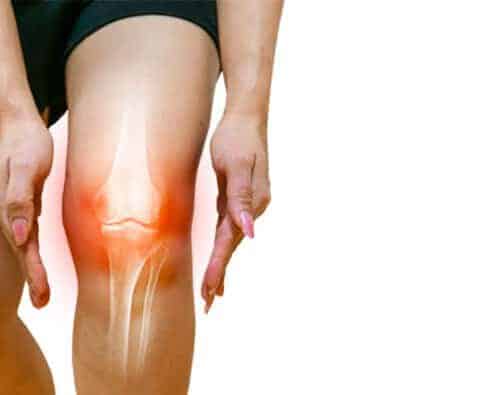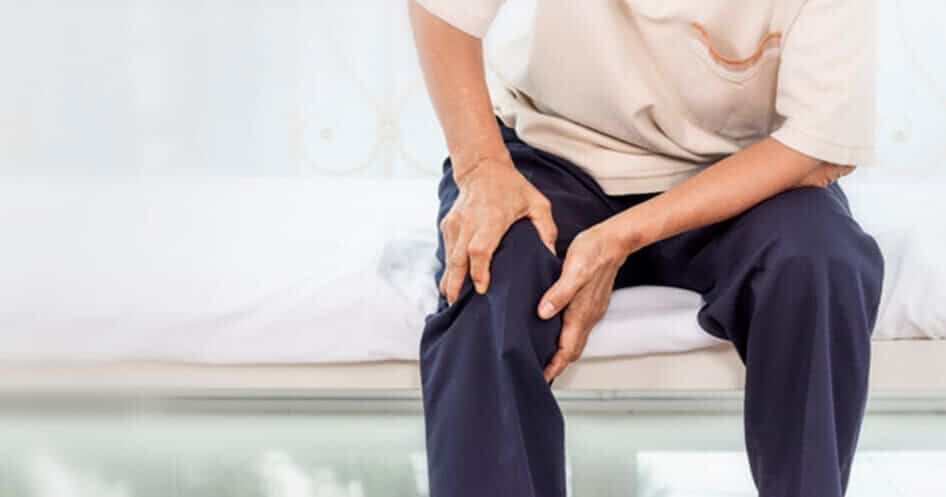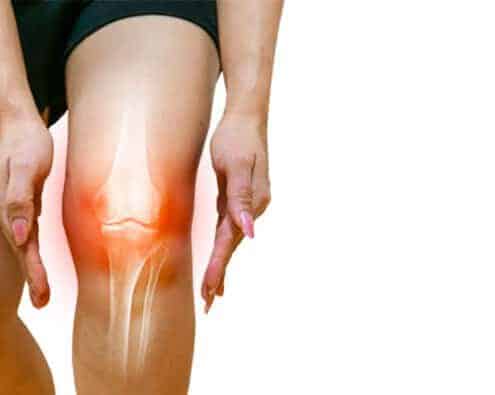
Have you ever heard someone say that winter is coming because they feel a little achy in their joints? Cold weather can be painful for those suffering from inflammatory medical conditions like arthritis and more. In short, it can worsen the pain in the already vulnerable body parts. In this article, our experts tried to explain the link between cold weather and joint pain.
Temperature is one of the standard features of nature, and it is crucial to know how it impacts chronic pain conditions. Cold weather can amplify the pain and slow the healing. Thus, you should be well-prepared before the winter approaches to prevent the damage.
Sadly, winter and chronic pain go hand in hand. However, specific steps can help you minimize the impact of cold weather on your pain. While many people and even the doctors think cold weather is the main culprit behind the increased pain during winters and rainy seasons, research on the connection between these is not so detailed.
How Does Weather Influence Our Body?
Pain conditions in every patient are different. However, the following factors are common with our body’s reactions towards the weather prediction.
Cold Weather
Naturally, our body always tries to keep us warm, but the blood flow in the body changes during winters. Cold weather causes rerouting of the blood flow from our limbs to major organs such as liver, heart, and lungs. As a result, the required warmth does not reach our joints, and this leads to discomfort. Moreover, the fluid inside our joints gets thicker due to cold weather that causes stiffness.
Barometric Pressure
Barometric pressure is the air pressure in our surroundings. Expansion and contraction in muscles, tendons, and scar tissues are typical during such times.
Like the precipitation, humidity, and weather, the air pressure can also cause discomfort for joint pain patients. During winters, the air pressure drops. This wears away the cartilage that cushions bones inside joints. Ultimately, nerves in the exposed bones experience increased pain.
Furthermore, a drop in barometric pressure results in swelling of inflamed body parts such as shoulders, hips, elbows, knees, and hands. This disturbs the nerves in the bones and results in more pain.
Lack of Activity
Winters limit our movements causing stiffness in our joints. Inactivity or lack of activities can be more painful for patients of chronic pain. Therefore, you should find ways to stay active during winters even if you are forced to be indoors.
Vitamin D
Winter means less daylight. As we all know, sunlight is the most significant source of vitamin D that benefits your bones and cartridges. With less sunlight, the chances of vitamin D deficiency increases. This can worsen the pain significantly in osteoarthritis patients.
We all know that our body’s natural temperature is 98.6 degrees Fahrenheit and the most favorable environmental temperature is around 70 degrees Fahrenheit. Extreme changes in these two figures can be very uncomfortable for us or even cause death.
When the environmental temperature drops, our body adjusts metabolism so that it can compensate for cold weather. It also burns more calories than usual to maintain warmth inside the body. Ultimately, you either end up with weight loss or increased appetite.
It is natural to want to be inside your home during winters as the weather conditions outside are not favorable. Staying inside the house means limited physical movements. Cold temperatures stiffen your ligaments, muscles, and tendons, which can be painful. Maintaining an exercise routine is the best way to tackle this problem. Winters and lack of movements together cause more damage to the affected body parts. Conditions such as fibromyalgia and osteoarthritis can get worsened during such times and affect your nerve conditions.
Connection Between Brain, pain, And Cold
The weather has a lot to do with our mood. According to one study, one out of five Americans feel depressed when the winter or fall arrives. This condition is called Seasonal Affective Disorder (SAD). Health experts believe that this illness’s probable cause can be a mixture of long nights, heredity, and environmental changes. However, the research on this topic is still minimal. You can visit a well-known pain clinic near you to know more about it.
Whether you experience symptoms of SAD or not, pain conditions get worse during winters. When chronic pain is accompanied by depression, it can make life difficult for the patient. Both of these conditions reinforce each other as the same neurotransmitters are involved in depression and pain cases.

Which Health Conditions Are Mostly Affected Due To Cold Weather?
Drop in temperature affects the arthritis patients more than any other. Such patients experience breakdown in bones and cartridges in the joints, which leads to intense swelling, decreased range of motion, and pain.
Several other health conditions can be affected by cold weather such as migraines, gout and some trigeminal nerve conditions. Such nerves are responsible for the sensations we experience in the face. Cold wind stimulates such nerves that cause pain.
How You Can Beat Cold Weather And Pain
Dictating weather is impossible. However, you can certainly follow the given steps to minimize its impact on your health and pain:
Drink Plenty Of Water
Maintaining internal fluid level is extremely crucial to keep your bones healthy. Bones have significant watery precipitation around them, and dry air in winters can take a toll on it. Our body loses the internal moisture during this season that is why drinking more water is recommended. Remember to stay away from alcohol and caffeinated drinks as they dehydrate your body faster.
Exercise Regularly
Winter is the best time to get that stationary bike or wrights at your home in action. If you are not fond of cycling or gymming, even some basic calorie-burning exercises can work. Experts suggest to carry out routine stretches and core-strengthening exercises to keep your body active.
Move To Warmer Climate Area
This option is only possible when you have the resources. Moving to a place that does not have cold weather can be a great deal to avoid consequences. If you are up for this option, make sure to move early enough so that you do not experience winter-related pain while travelling.
Keep Yourself Warm
Wear warm clothes during the day to avoid the impact of cold. Nights during winter can be more brutal, so using electric blankets and heated mattress covers is a wise idea to prevent complications. When you are struggling with a particular pain condition, a sound sleep must be your priority. Cold can disrupt it; that is why you have to take extra care during nights.
Take Hot Water Baths
It isn’t easy to provide warmth to all of our body parts. A hot water bath can be an excellent way to fulfil this need. Warm baths, an ideal remedy to pain sufferers, offer much-needed relief to all the body parts.
Eat Healthy Diet
A balanced and nutritional diet has many benefits as it helps you gain some extra pounds. It not only takes the stress off your joints but also prepares your body to combat cold weather.
Use NSAIDs
Have a word with your pain doctors about NSAIDs. These non-steroidal anti-inflammatory drugs prevent inflammation and provide relief. Some examples of these drugs are aspirin, ibuprofen and naproxen.
Apart from all the given ways to fight cold weather, there are a few more. You can apply ice packs in case of swelling on the affected areas. Or, choose massages to relax muscles that surround the vulnerable areas. And lastly, be extra protective while you are out of your home during winters. Cold weather means icy surfaces where the chances of slipping or falling are more. Ensure to wear sturdy footwear and walk carefully to prevent further damage to your joints. Do not perform activities that strain your joints, such as lifting heavy items.
If you are suffering from consistent pain that does not go away, consult with your pain doctor as he or she can identify the source of the pain and recommend the right remedy to get rid of it. While every pain case is different, your pain treatment plan may include surgery, specific lifestyle changes, and physical therapies.
Some Other Winter Hazards That Can Affect The Pain Conditions
Several external problems related to winter can intensify your pain conditions. Winter is full of risks, and therefore the proper care and precautions are recommended to avoid harm to your body. Keep the following things in mind as you go about your daily routine during winters.
Flu And Cold
If you are a chronic pain patient and contract influenza or cold in winters, the situation may worsen. Avoid such damaging complications by getting your yearly flu shot and being extra careful while eating, working, and roaming outside. Eat well, and keep yourself hydrated. Also, wash your hands regularly to avoid infections.
Vehicle Collisions
Winters are difficult for drives, and as a result, the cases of vehicle collisions in winter are common. Such collisions can lead to severe injuries and fatalities. In the United States, around 76000 people get injured every winter because of poor driving conditions. Therefore, avoid driving if possible during such times and keep your vehicle in its best condition to stay away from similar risks.
Hypothermia
Cold is followed by hypothermia. Even this seems to be the US’s apparent problem; many Americans fail to keep themselves warm enough during the cold weather. You can avoid this by covering your body as much as possible, whether you are in or out. Remember, frostbite can be dangerous for your already existing pain condition. So, be smart to ease the shock of a temperature drop on your body by dressing in layers.

Final Words
While we can do very little about the cold weather, small changes in the lifestyle can benefit many suffering from pain. Even a few sips of hot tea or hot chocolate every morning can be a game-changer to keep suffering at bay.
Even though there is no clear evidence that describes the connection between cold weather and joint pain, one thing is sure — the drop in temperature can significantly contribute to joint pain. If not properly treated, it can cause substantial damage to your joints, cartridges, and nearby bones.




